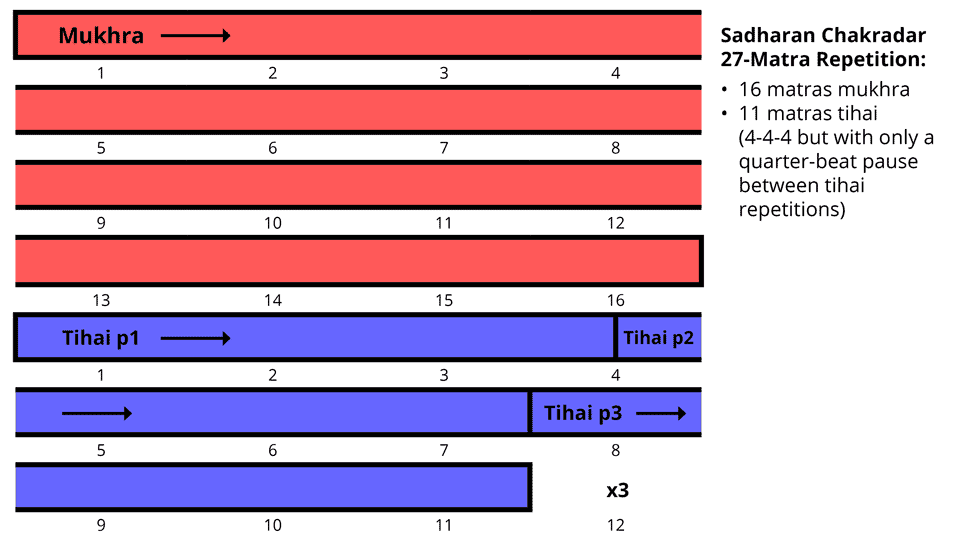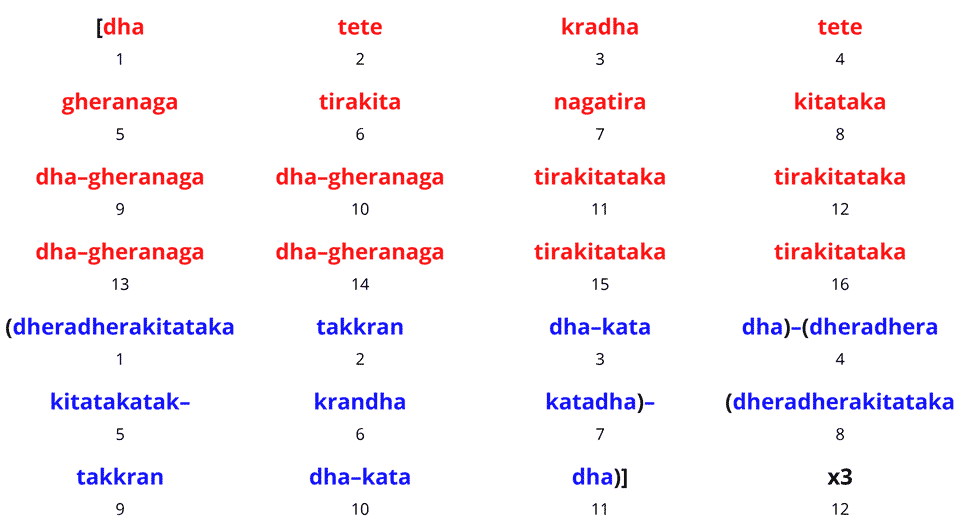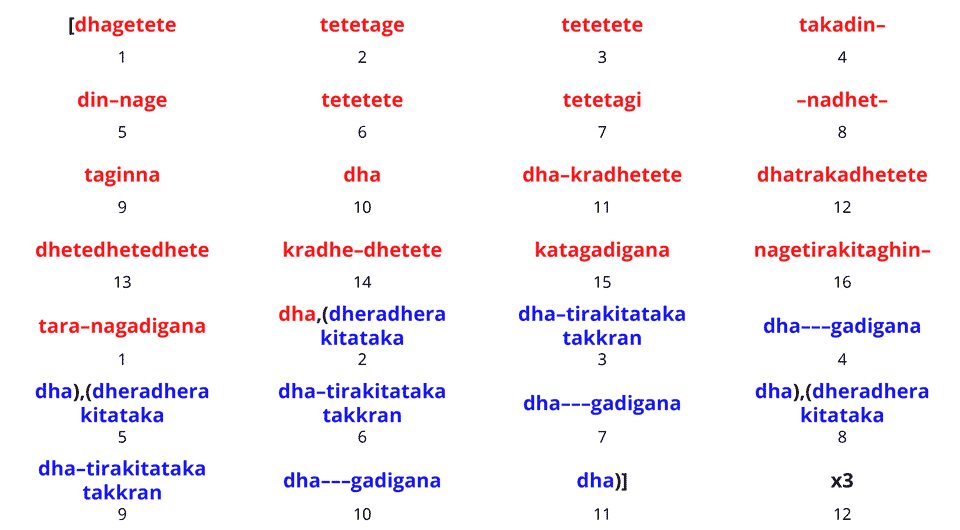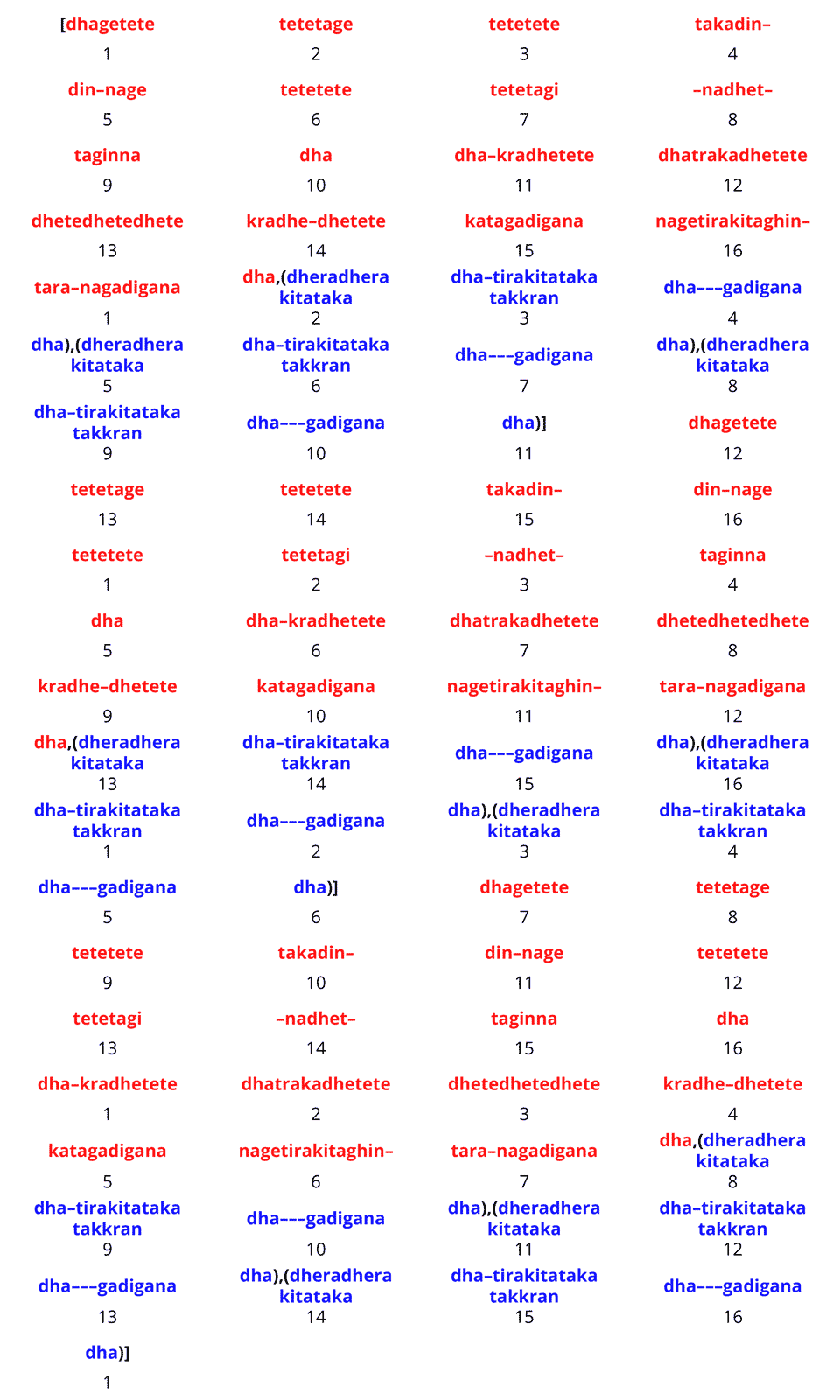Sādhāraṇ Chakradār – साधारण चक्रदार
Literal Meaning: “ordinary” or “common” chakradar
Sadharan Chakradar Characteristics
- Length of chakradar: 81 matras (5 avartans plus sam)
- Length of main repetition: 27 matras
- Length of mukhra: 16 matras
- Length of tihai: 11 matras (4–4–4)
- Length of pause between tihai repetitions: .25 matra
- Length of pause between main repetitions: 0

About the Sadharan Chakradar
The term sadharan chakradar is taken from Chhotelal Misra’s theory books. Like the term simple chakradar, sadharan is not a term that everyone uses. Sadharan simply means “common”. In all tals, the sadharan chakradar is usually longer than the simple chakradar.
In the simple chakradar, the main repetition was 11 matras. Here the main repetition is 27 matras. And like the simple chakradar, the particular divisions of the main repetition have many variations. We’ll look at a few of these below.
Sadharan Chakradar Mathematics
The sadharan chakradar is 5 avartans long, plus sam:
- length of chakradar = 81 (5 x 16 = 80 + 1 = 81)
- length of repetition = 27 (81 ÷ 3 = 27)
The 27-matra repetition is divided as follows:
- length of mukhra = 16
- length of tihai = 11
This version of the 27-matra repetition is the most straight-forward and easy for tabla players to remember: first we play 16 matras of mukhra (1 round of tintal), followed by the common 11-matra tihai.
Sadharan Chakradar Example
Below is an uthan which has the sadharan chakradar form given above. Notice that the tihai (blue text) uses the 3.5 matra phrase “dheradherakitataka takkran dha-kata dha” with only a quarter-matra pause afterwards (or no pause if we say that dha lasts for a half-matra). The second repetition then starts on the upbeat of matra 4 (this is a variation of Benares Uthan 3):

Full Uthan:

Sadharan Chakradar Example 2
Below is a variation of the standard sadharan chakradar form we saw above. This chakradar is made from a longer 9-matra piece (8 matras of mukhra mukhra plus dha (from 8-Matra Mukhra 5):

From this mukhra, we make our 27-matra repetition, which has the following division:
- 15 matras mukhra
- 12 matras tihai (4–4–4)

The mukhra-tihai division here is very close to the standard sadharan form. The mukhra is only 1 matra shorter (15 matras instead of 16), and our tihai is one matra longer (12 matras instead of 11). But this little change gives the tihai a different feeling.
Full Sadharan Chakradar from Mukhra:

Full sadharan chakradar:
Full sadharan chakradar with theka and lahra:
Sadharan Chakradar Tukra Variation
This is a traditional Benares sadharan chakradar tukra with the following division for the 27-matra division:
- 17.5 matras mukhra
- 9.5 matras tihai
27-Matra Repetition:

Notice that this chakradar has multiple lays (divisions of the matra):
- matras 1–10: chaugun (4:1)
- matras 11–15: chagun (6:1)
- matras 16–2.5: atgun (8:1)
- matras 2.5–1: solagun (16:1)
Full Chakradar Tukra:

References
Misra, Chhote Lal. Tal Prabandh. New Delhi: Kanishka Publishers, 2006. (Hindi)
—. Tal Prasoon. New Delhi: Kanishka Publishers, 2004. (Hindi)